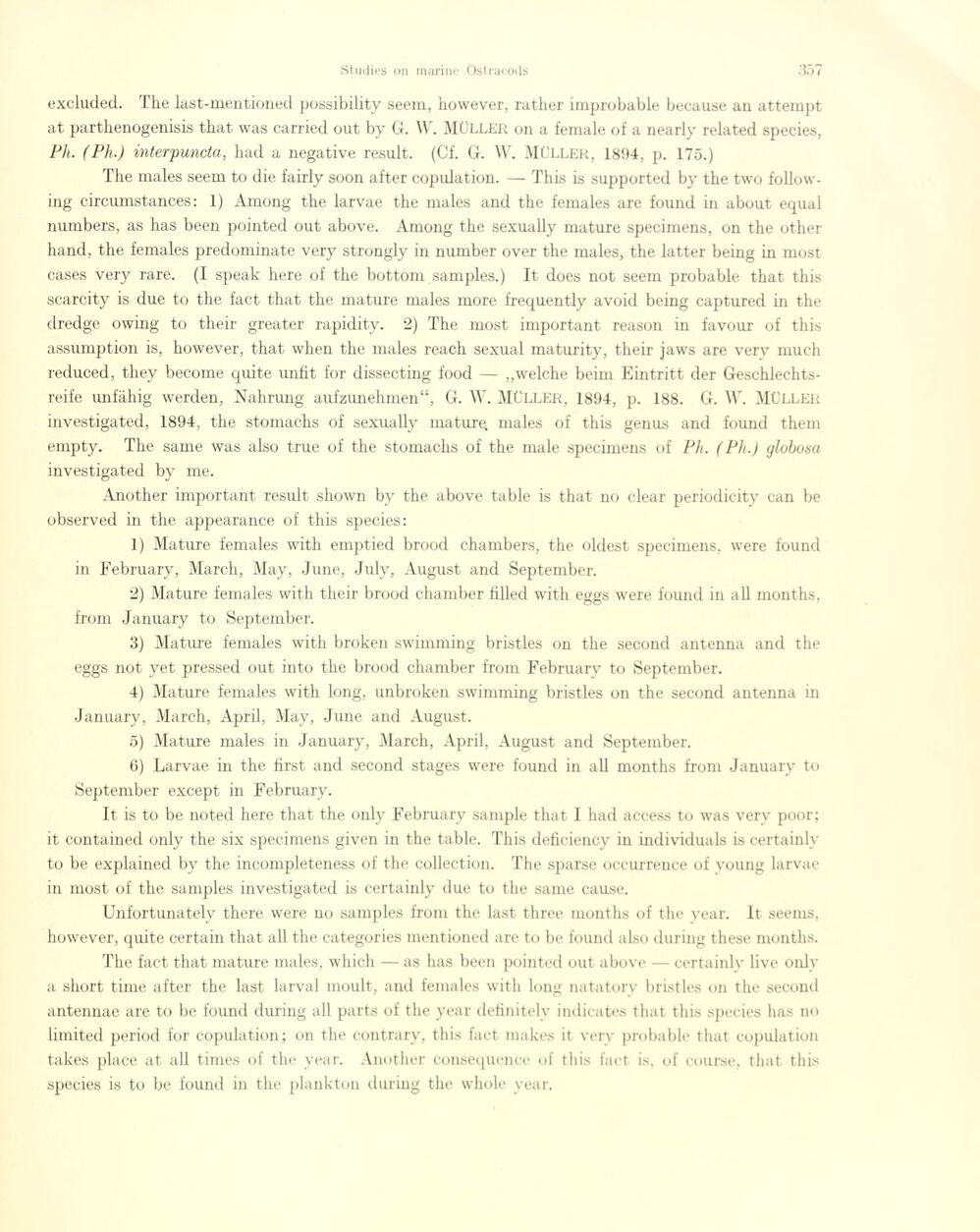
Full resolution (JPEG) - On this page / på denna sida - Sidor ...

<< prev. page << föreg. sida << >> nästa sida >> next page >>
Below is the raw OCR text
from the above scanned image.
Do you see an error? Proofread the page now!
Här nedan syns maskintolkade texten från faksimilbilden ovan.
Ser du något fel? Korrekturläs sidan nu!
This page has never been proofread. / Denna sida har aldrig korrekturlästs.
excluded. The last-mentioned possibility seem, however, rather improbable because an attempt
at parthenogenisis that was carried out by G. W. MÜLLER on a female of a nearly related species,
Pli. (Pli.) interpuncta, had a negative result. (Cf. G. W’. MÜLLER, 1894, p. 175.)
The males seem to die fairly soon after copulation. — This is supported by the two folio
w-ing circumstances: 1) Among the larvae the males and the females are found in about equal
numbers, as has been pointed out above. Among the sexually mature specimens, on the other
hånd, the females predominate very strongly in number over the males, the latter being in most
cases very rare. (I speak here of the bottom samples.) It does not seem probable that this
scarcity is due to the faet that the mature males more frequently avoid being captured in the
dredge owing to their greater rapidity. 2) The most important reason in favour of this
assumption is, however, that when the males reach sexual maturity, their jaws are very mueh
reduced, they become quite unfit for dissecting food — „welche beim Eintritt der
Geschlechtsreife unfähig werden, Nahrung aufzunehmen“, G. W. MÜLLER, 1894, p. 188. G. W. MÜLLER
investigated, 1894, the stomachs of sexually mature, males of this genus and found them
empty. The same was also true of the stomachs of the male specimens of Pli. (Pli.) globosa
investigated by me.
Another important result shown by the above table is that no clear periodicity can be
observed in the appearance of this species:
1) Mature females with emptied brood chambers, the oldest specimens, were found
in February, March, May, June, July, August and September.
2) Mature females with their brood chamber filled with eggs were foimd in all months,
from January to September.
3) Mature females with broken swimming bristles on the second antenna and the
eggs not yet pressed out into the brood chamber from February to September.
4) Mature females with long, unbroken swimming bristles on the second antenna in
January, March, April, May, June and August.
5) Mature males in January, March, April, August and September.
6) Larvae in the first and second stages were found in all months from January to
September except in February.
It is to be noted here that the only February sample that I had access to was verv poor;
it contained only the six specimens given in the table. This deficiency in individuals is certainly
to be explained by the incompleteness of the collection. The sparse occurrence of young larvae
in most of the samples investigated is certainly due to the same cause.
Unfortunately there were no samples from the last three months of the year. It seems,
however, quite certain that all the categories mentioned are to be found also during these months.
The faet that mature males, which — as has been pointed out above — certainly live only
a short time after the last larval moult, and females with long nata tory bristles on the second
antennae are to be found during all parts of the year detinitely indicates that this species has no
limited period for copulation; on the contrary, this faet makes it very probable that copulation
takes place at all times of the year. Another conséquence of this faet is. of course, that this
species is to be found in the plankton during the whole year.
<< prev. page << föreg. sida << >> nästa sida >> next page >>